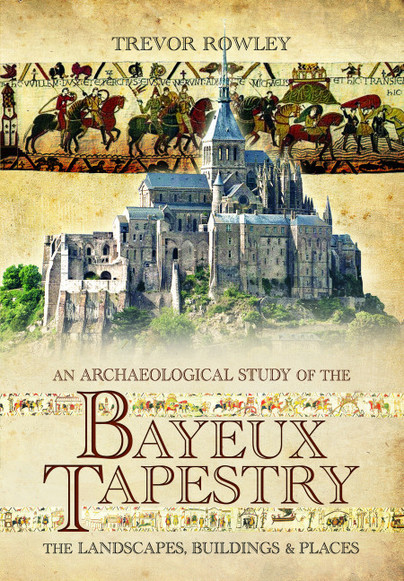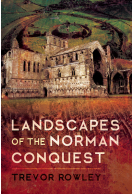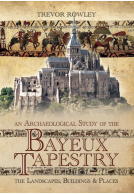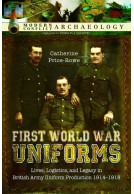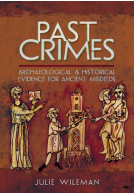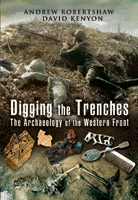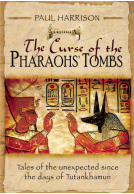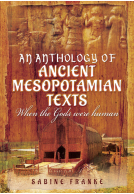An Archaeological Study of the Bayeux Tapestry (Paperback)
The Landscapes, Buildings and Places
Imprint: Pen & Sword Archaeology
Pages: 224
Illustrations: 150 colour Illustrations
ISBN: 9781526796691
Published: 6th October 2022
(click here for international delivery rates)
Order within the next 5 hours, 9 minutes to get your order processed the next working day!
Need a currency converter? Check XE.com for live rates
| Other formats available | Price |
|---|---|
| An Archaeological Study of the… Hardback Add to Basket | £25.00 |
| An Archaeological Study of the… eBook (10.4 MB) Add to Basket | £6.99 |
An Archaeological Study of the Bayeux Tapestry provides a unique re-examination of this famous piece of work through the historical geography and archaeology of the tapestry. Trevor Rowley is the first author to have analysed the tapestry through the landscapes, buildings and structures shown, such as towns and castles, while comparing them to the landscapes, buildings, ruins and earthworks which can be seen today. By comparing illustrated extracts from the tapestry to historical and contemporary illustrations, maps and reconstructions Rowley is able to provide the reader with a unique visual setting against which they are able to place the events on the tapestry.
This approach allows Rowley to challenge a number of generally accepted assumptions regarding the location of several scenes in the tapestry, most controversially suggesting that William may never have gone to Hastings at all. Finally, Rowley tackles the missing end of the tapestry, suggesting the places and events which would have been depicted on this portion of William’s journey to Westminster.
Rowley’s arguments are copiously illustrated with details from the tapestry, photographs and plans. It results in very densely packed chapters well worth reading, and you certainly will never look at that tea towel in the same way again.
Hexham Local History Society (Hexham Historian Newsletter - Spring 2023)
This is an interesting read, and a very different approach to the Bayeux Tapestry, giving us a good insight into the physical world in which these events actually took place.
History of War
Read the full review here
A useful synthesis of current and established knowledge on the archaeology of the tapestry.
Medieval Settlement Research Group
Trevor Rowley features as one of six experts to comment on 'Will the Bayeux Tapestry actually come to Britain?'
BBC History magazine, May 2018
As featured on...
Amazon, Michelle McMenamin
The book is accompanied by 26 images in black and white and 42 in colour, essential for understanding the text.
José Manuél Rico Cortés (Mister JM) - Miniaturas JM
An interesting piece of work that describes a fact of great historical importance.
Read the full Spanish review here.
When I saw the Bayeux Tapestry nearly 50 years ago it made a big impression on me, not for its sheer size, but for the realisation that history is written by the victor. That said 50 years later we are no nearer knowing who commissioned the work or why. Without that knowledge the Tapestry is capable of being interpreted in many ways and most scenes are ambiguous in some aspect of their meaning. Yet it remains an important source of information for historians and archaeologists alike. This new book, An Archaeological Study of the Bayeux Tapestry,provides a unique re-examination of this famous piece of work through the historical geography and archaeology of the tapestry.Author Trevor Rowley sets out to analyse the tapestry through the landscapes, buildings and structures shown, such as towns and castles, while comparing them to the landscapes,buildings, ruins and earthworks which can be seen today. By comparing illustrated extracts from the tapestry to historical and contemporary illustrations,maps and reconstructions Rowley is able to provide the reader with a unique visual setting against which they are able to place the events on the tapestry.This approach allows a challenge to a number of generally accepted assumptions regarding the location of several scenes in the tapestry, most controversially suggesting that William may never have gone to Hastings at all.Finally, Rowley tackles the missing end of the tapestry, suggesting the places and events which would have been depicted on this portion of William’s journey to Westminster.
Village Publications
This is a beautiful book. It contains many colour photographs, maps and diagrams of the tapestry, places depicted, personalities, costumes and weapons of the period, as well of course of the successful 1066 invasion of England.
Dr John Viggers, Freelance
Tearing myself away from browsing the pictures to read the text, I found a detailed history of the tapestry, as far as is known. And correlation with what is known about the history of the Norman invasion and what led up to it.
It corrects a common misconception about the tapestry, pointing out that it is not a tapestry at all, but technically it is embroidery, albeit a very large one.
Most interesting is the correlation with places depicted on the “tapestry” with modern location photographs and historical paintings. And taking into account archeological discoveries near Hastings and other places, including one by “Time Team”.
I was surprised to discover that the site of the Battle of Hastings is not definitely known. And where the tapestry was made is still a subject of debate. Even the details of the death of King Harold are uncertain.
I’m not sure what I expected here. It’s a tapestry. I didn’t know how much archaeological evidence was going to be interesting or compelling. I had a moment of “uh oh” when the colours of the thread used were being analysed; Is this going to be a bore-fest? Actually, I am amazed at how much I liked this. It was so engaging. The use of landscape archaeology to illustrate the tapestry was very effective. It was world building for me, as if I was reading a regular fiction book.
Goodreads, Michelle McMenamin
The Bayeux Tapestry depicts the story of Harold, Earl of Wessex and William the conqueror and events that lead up to the Battle of Hastings. We follow the tapestry and analyze the people, symbols and possible places that are shown. Each of the scenes is shown with beautiful full color illustrations and pictures. As we are taken through the scenes in the tapestry we are guided through archaeological evidence that correlates with the scenes. This includes full sites such as Westminster, or artifacts like boats or reliquaries. Each is analyzed as it would have been experienced by the tapestries contemporaries. It was very interesting to see the artistic influences that the tapestry makers were using. For example, there is evidence that Trajan’s column in Rome was influential. There are also comparisons of architectural details from existing buildings to those that are stitched on the tapestry.
Trevor Rowley does such a wonderful job rebuilding the world of Harold and William that you get a sense of the changing landscape. This was my favorite part about the book. I loved how the landscape that is described is in transition between changing art, architecture, and cultural changes. For example, what roads were used on a certain part of the journey; The remnants of Roman roads or something earlier? What were the building materials used? Were they part of an old Roman fort? I could imagine crumbling Roman ruins and infrastructure that were being reused into new buildings and new artistic designs, which incidentally would become Romanesque.
By the end of the book I really felt like I was transported into the tapestry. At first what seemed like rather juvenile stitches in time, now seem complicated and well thought out. This is now part of my bucket list of things that I must see in person before I die.
This is an interesting and (in the most part) nicely illustrated book, bringing together some useful and new information, which will appeal to both the general reader and those fanatically interested.
British Archaeology, March 2017 - reviewed by Michael Lewis
What a lovely book. The Bayeux Tapestry has always brought this memorable story to life, but Rowley's book grounds that ancient story in reality. It's beautifully illustrated allowing one to compare images in the tapestry with the evidence we can see today: maps, groundwork's and buildings. Retelling the story in a very accessible way, I'd highly recommend this book to 1066 enthusiasts.
4Hoplites, Ashley Holt
Basis of feature article by David Miles, examining some of the archaeological theories about the Bayeux Tapestry
Minerva, January/February 2017
As featured in
Oxford Mail
For anyone interested in the Bayeux Tapestry, this book is a must-read. It provides a unique
Timeless Travels magazine, Winter 2016
re-examination of this famous piece of work through the historical geography and (a very loosely termed) archaeology of the tapestry. Trevor Rowley is the first author to have closely examined the landscapes, buildings and structures shown on the tapestry and compares them to the landscapes, buildings, ruins and earthworks which can be seen today. By comparing illustrated extracts from the tapestry to historical cotemporary illustrations, maps and reconstructions, Rowley is able to provide the reader with a unique visual setting against which they are able to place the vents depicted on the tapestry itself. This approach also allows Rowley to challenge a number of generally accepted assumptions regarding the location of several scenes in the tapestry, and most controversially, suggesting that William may never have gone to Hastings at all. Finally, he tackles the missing end of the tapestry, suggesting the places and events which would have been depicted on William's rout to Westminster.
We all know what the Bayeux Tapestry celebrates in its iconic artwork, but Trevor Rowley goes one step further and looks at the buildings and characters with a view actually identifying them! Absolutely fascinating, brings a whole new dimension to the study of this amazing artefact.
Books Monthly, November 2016 – reviewed by Paul Norman
Interview feature with Trevor Rowley
History of Royals, September 2016
About Trevor Rowley
Trevor Rowley is a historian and archaeologist who has written many books on different aspects of the English landscape and of the Normans. He has spent a career lifetime working in extra-mural university education dedicated to making history accessible to as wide an audience as possible. He continues to travel and lecture in Europe and America to spread the word.







